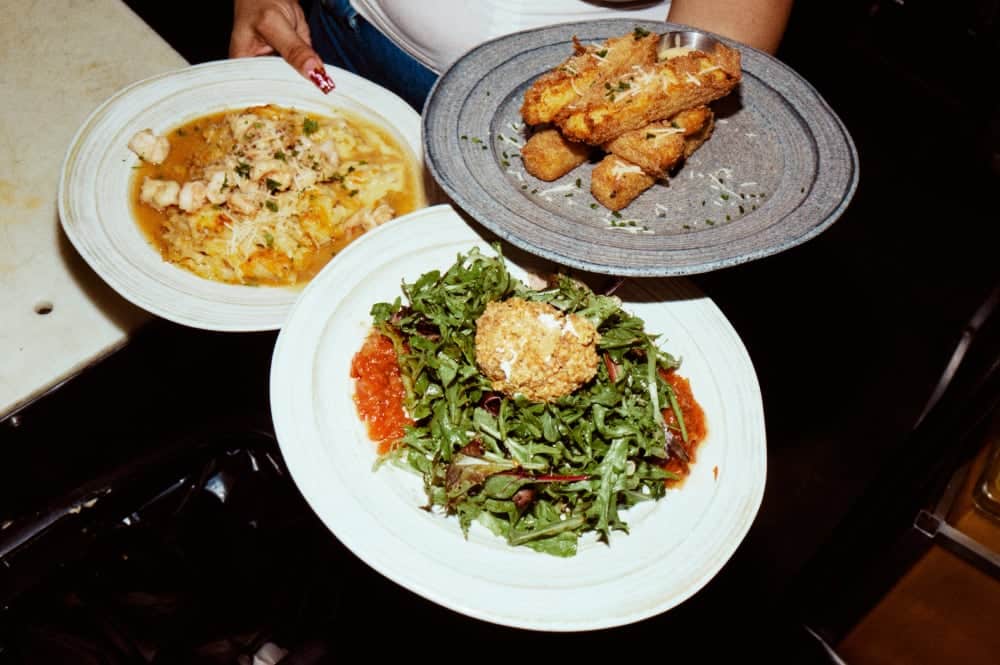Table of contents
In the ever-evolving world of culinary innovation, some of the most exciting innovations emerge from the fusion of cuisines, cultures, and styles, blending traditional and modern with fine-dining casual experiences. Of course, merging cooking styles takes skill, vision, and dedication. In the hands of the right chef, concepts that might look peculiar on paper can become delicious dishes. At the same time, those that sound promising may not work at all.
One chef who has mastered this delicate balance is Executive Chef Alisa Reynolds, a James Beard Award nominee. Chef Alisa describes herself as a French-trained chef with a soul food foundation. She has made waves at her Los Angeles restaurant, My 2 Cents, where she reimagines traditional Southern comfort dishes using her classical culinary training. Applying elevated techniques and using premium ingredients, she puts a healthy, modern twist on soul food. We spoke with Chef Alisa about balancing refinement and comfort — in her kitchen and yours.
Meet the Visionary
Alisa Reynolds, founder/executive chef of My 2 Cents
Past experience: Paio, Park Avenue Cafe,
Recognition: James Beard Award nominee, “101 Best Restaurants in Los Angeles” (Los Angeles Times), host of “Searching for Soul Food” (Hulu)

Taking a leap
I started in television production. I worked on the sitcom Moesha in the 1990s. But I saw how good food makes people feel better and I wanted to be involved in that as a career. So I went and trained under two five-star chefs in New York and started cooking all around the world. That led me to start my own restaurant and bring my background to my community in Los Angeles.
Classical training
I use my fine-dining background in everything I do. Classical training isn’t about just the actual dishes. It’s about process and preparation, too. For example, mise en place — having all your ingredients in place — makes things simpler. The way I cut vegetables comes from my training. My French background also shows up in my stocks and sauces. French food at its essence is super simple — simplicity done really well. I like to pay attention to the process and the artistry of it all.

Finding the right blend
I wanted my restaurant to feel like the perfect blend of my background in French cuisine and the comfort of classic Southern dishes. The shrimp and grits we serve traditionally started with a beurre monté, which is a classic French butter sauce. But I knocked it on its head and added Creole and used a stock instead of water. The sauce has only four elements, but when you combine them together, it creates this luxurious dish. Or take our oxtail taco. Reductions are common in French cuisine. With the oxtail, I did a bourbon reduction, and we used hot sauce and maple syrup. So I took the method of reducing from French cuisine and applied it to my culture — you know, grandma’s reduction.
Balancing authenticity and refinement
There are always challenges with merging cooking styles. When I find it hard to bring my approach to a traditional dish, I try to reduce the ingredients to an essence. So you might get a certain flavor at the end, a pleasant surprise. That’s why I call our approach to food “evolved nostalgia.” You feel the same comfort you got from a dish your grandma made you, but because of the technique and the ingredients we use, it’s more modern and healthy.
Serving health-conscious diners
I wanted the restaurant to be a melting pot. We have a lot of dishes that are vegan and gluten-free. What we serve tends to be more healthful than traditional Southern cuisine because of our market. But you know what? It still tastes delicious. So the younger generation can bring their grandmother to the restaurant. She orders fried chicken, braised greens, and cheese grits. She doesn’t know she had a gluten-free meal. When you tell her afterward, she’s like, “What? Really?”

Adding a French twist to your own kitchen
If you’re preparing a dish that you want to feel elevated, I can’t stress enough the difference that flavoring with fresh herbs makes. It’s a small change that makes a big difference. Just go down the fresh aisle in your local grocery store instead of relying on dry seasonings. Also, something as simple as the way you cut your vegetables can bring a little artistry to what you’re cooking. We’re all so busy that we’re usually cooking for survival. Little changes like that can help you fall in love with food and cooking again.
![]()








